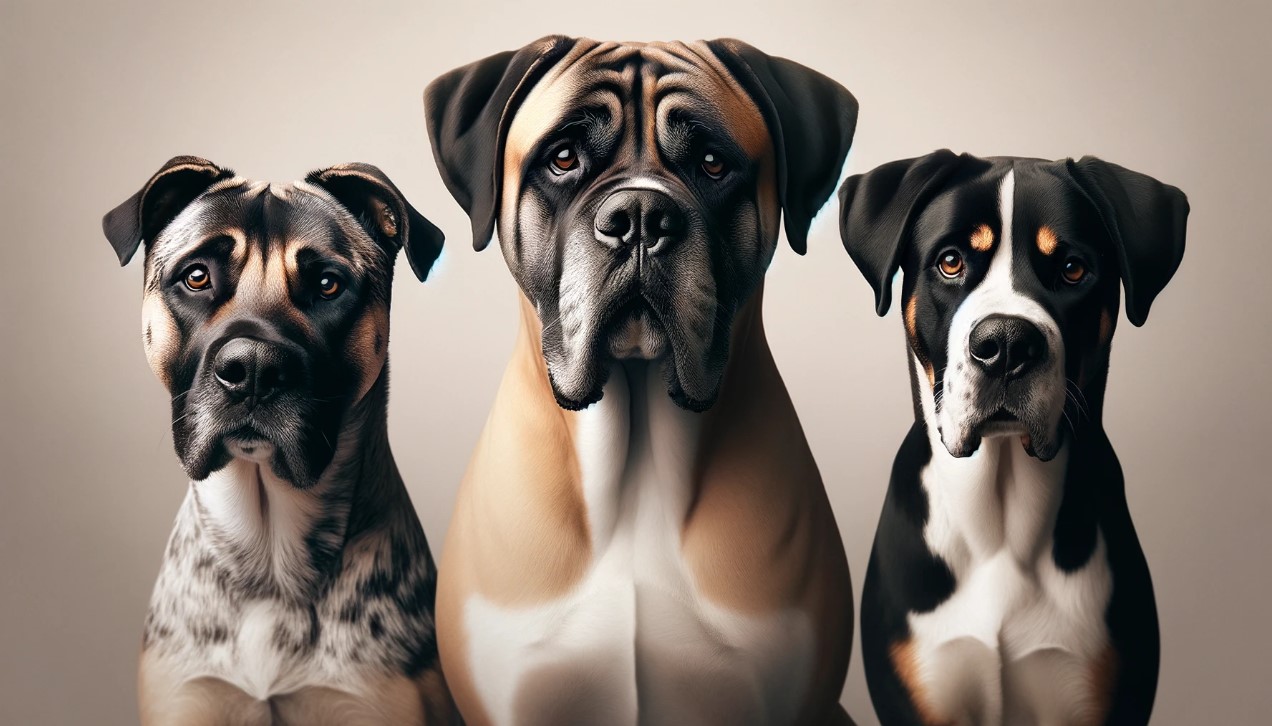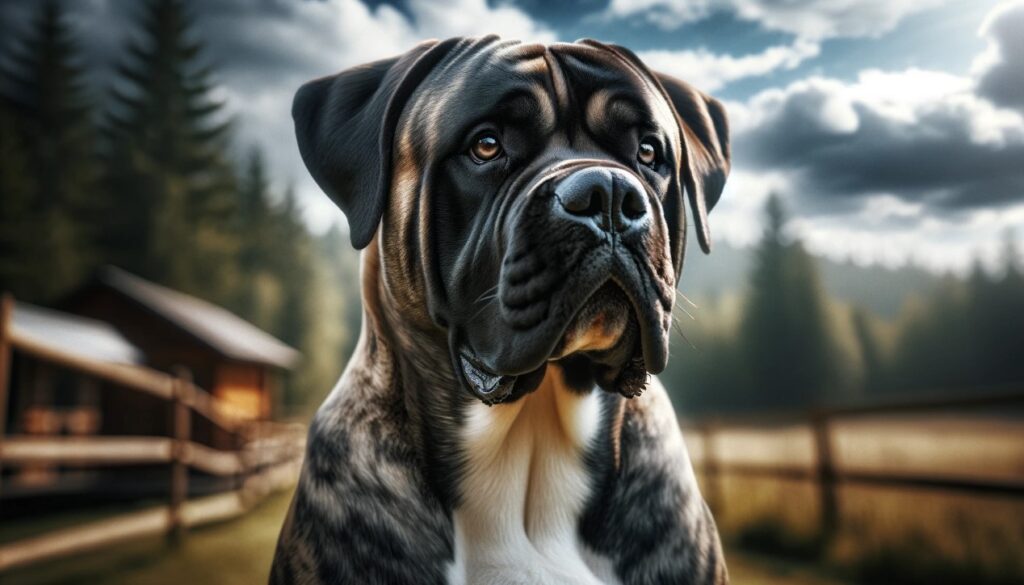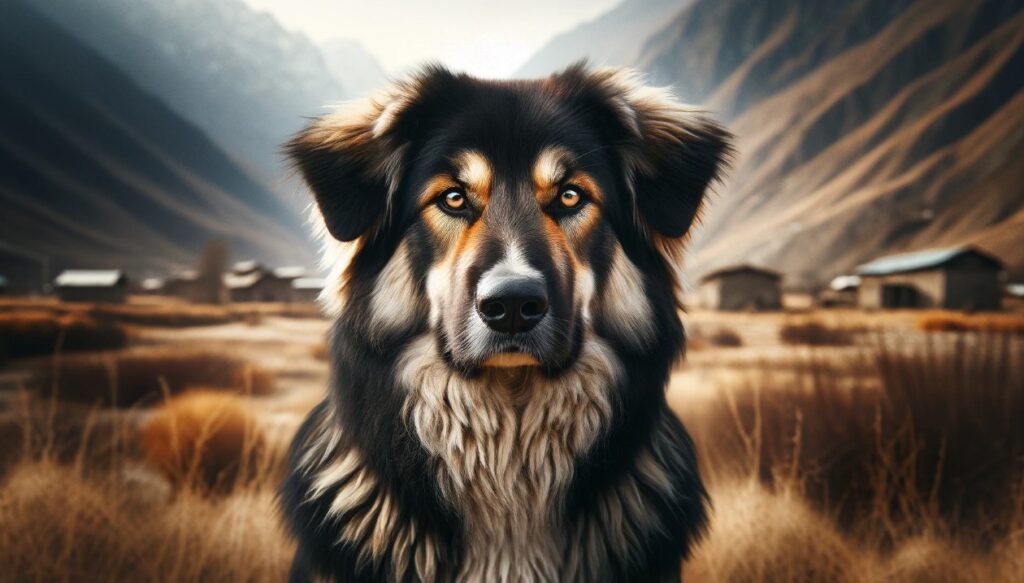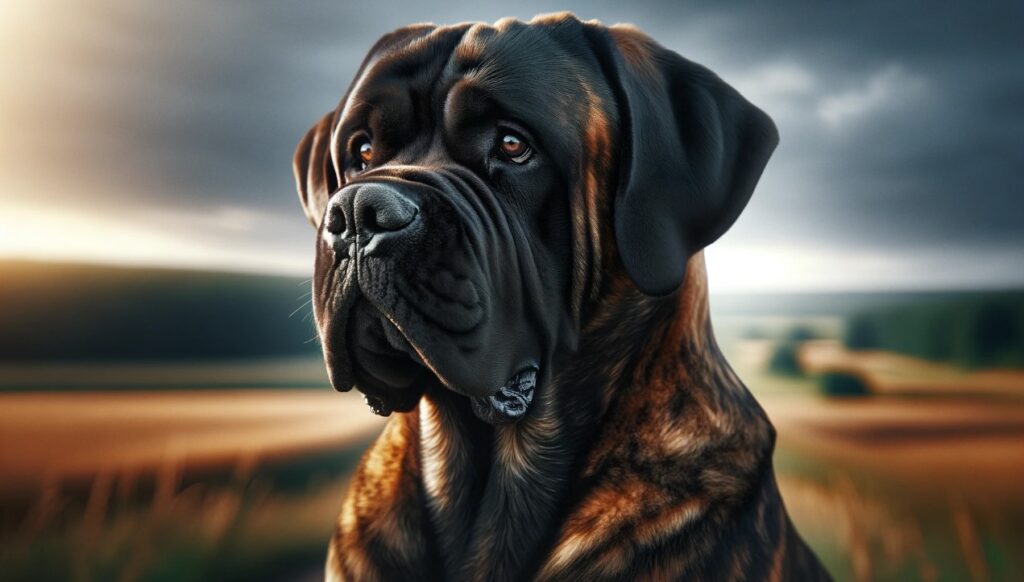As a holistic veterinarian, I’ve always been fascinated by the rich tapestry of canine cultures worldwide. Today, I’d like to invite you to join me on an exciting journey, as we explore the remarkable world of Pakistan dog breeds. These indigenous breeds, each with its unique characteristics and rich history, offer a wonderful insight into Pakistan’s diverse cultural and geographical landscapes.

The tradition of dog breeding in Pakistan is steeped in history, stretching back centuries. Over these years, indigenous breeds have woven themselves into the country’s cultural fabric, becoming symbols of Pakistani heritage. These noble creatures are more than just pets; they’re loyal companions, fierce protectors, and integral parts of many rural communities.
The distinct characteristics of these Pakistani dog breeds reflect the country’s varied climates and terrains. From the rugged mountains of the north to the arid plains of the south, these dogs have evolved to thrive in Pakistan’s unique environments. They possess impressive physical attributes, in addition to unique behavioral traits and temperaments, shaped by their particular roles and lifestyles.
Among these breeds, the Pakistani Mastiff, or Bully Kutta, stands out. This majestic breed, known as the ‘Beast from the East,’ boasts an imposing stature and a fearless disposition. Another treasured breed is the Pakistani Shepherd Dog, or Bhagyari Kutta. Loyal and hardworking, this breed is the heart and soul of many rural communities.
Understanding and appreciating these unique breeds is the first step towards preserving their legacy. While challenges exist, including dwindling numbers for some breeds, the efforts of dedicated breeders, kennel clubs, and conservationists are playing a vital role in safeguarding these living pieces of Pakistani heritage. As we delve deeper into their fascinating world, we’ll gain a new appreciation for the rich canine heritage of Pakistan.
The Distinct Characteristics of Pakistani Dog Breeds
Ready to embark on an exciting, tail-wagging journey that reveals the unique attributes of Pakistani dog breeds? These breeds are not just dogs; they’re a testament to the resilience, adaptability, and cultural richness of Pakistan.
Adaptation to Local Climates and Terrains
Life in Pakistan’s diverse regions, from the scorching deserts of Sindh to the freezing heights of the Himalayas, has shaped the physical characteristics and survival instincts of its native dog breeds. Each breed is a marvel of natural selection, perfectly honed to thrive in specific environments. We’re talking about breeds that are tailored to withstand intense heat, navigate rugged terrains, and even endure strenuous physical activities.
Take, for example, the Pakistani Mastiff, also known as the Bully Kutta. This dog breed is a towering giant, bred in the punishing heat of the Punjab and Sindh regions. Its robust physique, incredible stamina, and heat-resistant coat are all direct results of surviving in the harsh Pakistani climate.
Then there’s the Pakistani Shepherd Dog, or the Bhagyari Kutta. This versatile breed, traditionally used for herding livestock, features a dense, double coat that provides insulation in cold weather, rugged paw pads for traversing rocky landscapes, and a keen sense of direction to navigate Pakistan’s varied terrain.
Unique Behavioral Traits and Temperaments
But adaptation doesn’t end with physical attributes; the behavioral traits and temperaments of Pakistani dog breeds are equally fascinating and diverse. Each breed carries a unique personality, developed over generations of interaction with human societies and carefully selected breeding.
The Bully Kutta, despite its intimidating stature, is known for its loyalty and protective nature. It’s a brave and intelligent breed, often used as a guard dog due to its keen instincts and protective attitude toward its human family. Let’s not forget its incredible strength – a trait that’s made it a revered breed across Pakistan.
On the other hand, the Bhagyari Kutta is known for its unmatched loyalty and exceptional herding skills. As the backbone of many rural communities, this breed is more than just a pet; it’s a member of the family. While they can be somewhat reserved with strangers, they are incredibly loving and protective when it comes to their human families.
Exploring the Pakistani dog breeds is like diving into a rich tapestry of natural survival instincts, loving companionship, and fascinating histories. These breeds are as diverse and captivating as the land they hail from, each one a testament to the remarkable adaptability of man’s best friend.
So, whether you’re a dog lover, a history buff, or simply curious about the canine world, there’s a great deal to learn and admire in the resilient, versatile, and intriguing dog breeds of Pakistan.

Pakistan Dog Breeds
Pakistan boasts a rich canine heritage, with several unique dog breeds that are indigenous to the region. These breeds are not only prized for their physical attributes and temperaments, but also for their historical and cultural significance. Let’s delve into the world of Pakistan dog breeds and discover what makes them so special.
Pakistani Mastiff (Bully Kutta)
The Pakistani Mastiff, more commonly known as the Bully Kutta, is a large and powerful breed that is renowned for its strength and endurance. This breed has deep roots in the region, with historical records suggesting that they were used in hunting and guarding livestock.
The Bully Kutta is a muscular breed, characterized by a broad head and a strong jaw. They can reach up to 35 inches in height and weigh anywhere between 70 to 90 kilograms. Their coats are short and smooth, usually in shades of white, fawn, black, or brindle.
Despite their intimidating appearance, Bully Kuttas are known for their loyalty and protective nature. They are intelligent and trainable, but also require strong leadership and consistent socialization due to their strong-willed nature. A properly trained Bully Kutta can make a devoted family pet, but they are not suitable for inexperienced or first-time dog owners due to their size and strength.
Pakistani Shepherd Dog (Bhagyari Kutta)
Another notable breed from Pakistan is the Bhagyari Kutta, also known as the Pakistani Shepherd Dog. This breed is smaller than the Bully Kutta but is equally robust and hardy. The Bhagyari Kutta originated in the rural areas of Pakistan, where they were used as herding dogs and guard dogs.
The Bhagyari Kutta is medium-sized, with a lean and muscular build that is well-suited to the harsh terrains of rural Pakistan. They can reach up to 27 inches in height and weigh between 25 to 35 kilograms. Their coat is dense and weather-resistant, usually in shades of black, brown, or brindle.
Known for their agility and intelligence, the Bhagyari Kutta are excellent herders and are highly trainable. They are also known for their loyalty and protective instincts, making them great family pets. However, they require plenty of exercise and mental stimulation, and are best suited to active families who can provide them with the lifestyle they need.
These two breeds represent the diversity and richness of Pakistan’s canine heritage. Each breed has been shaped by the local landscapes and cultures, resulting in dogs that are not only physically impressive, but also possess unique behavioral traits and temperaments. Whether it’s the power and endurance of the Bully Kutta, or the agility and intelligence of the Bhagyari Kutta, there’s no doubt that Pakistani dog breeds have a lot to offer.
The Majestic Bully Kutta: Pakistan’s Beast from the East
Let’s delve into the world of one of the most famous Pakistan dog breeds, the imposing and majestic Bully Kutta. Also known as the ‘Beast from the East’, this powerful breed is not just a dog; it’s a symbol of Pakistan’s rich canine heritage.
Origin and History of the Bully Kutta
The Bully Kutta originated in the Sindh region of Pakistan, with its roots tracing back to ancient times. The name ‘Bully Kutta’ translates to ‘heavily wrinkled dog’, a fitting description for this muscular and robust breed.
The breed was originally developed for hunting and guarding purposes by local tribes, and their impressive strength was put to use in taming wild animals. Over the centuries, the Bully Kutta has evolved to become a popular choice for dog fighting, a controversial and illegal sport that nonetheless has contributed to the breed’s reputation of fierceness and aggression.
Today, despite the negative association with dog fighting, the Bully Kutta is gaining recognition as a loyal and protective companion, a testament to the breed’s adaptability and resilience.
Physical Attributes and Temperament
The Bully Kutta is a large breed, with males standing anywhere between 30 to 44 inches and weighing between 150 to 170 pounds. Their physicality is characterized by a muscular build, a broad chest, and a wrinkled, square-shaped face, garnished by a pair of high-set ears.
As for their temperament, the Bully Kutta is known for its protective nature and territorial instincts. They are fearless and assertive, displaying high levels of endurance and agility.
However, beneath the tough exterior lies an affectionate and loyal heart. When properly trained and socialized, the Bully Kutta can be a gentle and loving family companion, demonstrating a profound bond with their human counterparts. They are also known to get along well with children, making them suitable for families.
Training a Bully Kutta requires patience, consistency, and a firm hand. They respond best to positive reinforcement techniques. It’s also crucial to socialize them early to prevent aggressive tendencies.
Overall, the Bully Kutta, with its imposing stature and loyal heart, is a true representative of Pakistan’s canine heritage. This breed, like the country it hails from, is a blend of strength, resilience, and warmth.

The Bhagyari Kutta: The Loyal Pakistani Shepherd
When it comes to the indigenous pakistan dog breeds, the Bhagyari Kutta holds a special place. Known for its loyalty, intelligence, and strength, this breed is deeply ingrained in the rural life of Pakistan.
The Role of Bhagyari Kutta in Rural Pakistan
In the rural areas of Pakistan, the Bhagyari Kutta is more than just a pet; it’s an integral part of the family and the farming community. These dogs have been bred for centuries to herd livestock and protect them from predators. Their strong, muscular build and keen instincts make them excellent guard dogs, capable of warding off threats from wild animals.
But the Bhagyari Kutta is not just a working dog. Its loyalty and protective nature make it a great family pet as well. These dogs are known to form strong bonds with their human families, showing a level of devotion and love that is truly remarkable. In rural Pakistan, it’s not uncommon to see a Bhagyari Kutta playing with children, standing guard over the family home, or helping out on the farm.
Training and Care for a Bhagyari Kutta
Training a Bhagyari Kutta requires a firm but gentle hand. These dogs are intelligent and eager to please, but they also have a strong will of their own. Early socialization and consistent, positive reinforcement training methods work best with this breed.
Here are some tips for training and caring for a Bhagyari Kutta:
– Start training early: The sooner you start training your Bhagyari Kutta, the better. These dogs are quick learners, and early training helps them understand their role and responsibilities within the family.
– Be consistent: Consistency is key when training a Bhagyari Kutta. Make sure everyone in the family follows the same rules and commands to avoid confusing the dog.
– Exercise regularly: Bhagyari Kuttas are active dogs that require regular exercise to stay healthy and happy. Daily walks, playtime in the yard, and mental stimulation are all essential for this breed.
– Provide a balanced diet: A balanced diet is crucial for the Bhagyari Kutta’s health. These dogs do well on a diet of high-quality commercial dog food, supplemented with fresh fruits, vegetables, and lean meats.
– Regular vet check-ups: Regular veterinary check-ups are important to ensure your Bhagyari Kutta stays in the best possible health. Regular vaccinations, deworming, and flea and tick prevention are all part of responsible pet ownership.
In conclusion, the Bhagyari Kutta is a true testament to the rich canine heritage of Pakistan. Whether they’re herding livestock, protecting the family home, or simply providing companionship, these dogs are a beloved part of Pakistani culture. Their loyalty, intelligence, and strength make them a breed worth celebrating.
The Sindhi Mastiff: A Rare Pakistani Gem
As we continue our journey through the rich canine heritage of Pakistan, we come across a rather rare and prized breed, the Sindhi Mastiff. Unfamiliar to many, this breed boasts a fascinating history and striking characteristics that make it stand out among other Pakistani dog breeds.
Unveiling the Sindhi Mastiff’s Past
The Sindhi Mastiff is a breed shrouded in mystery and intrigue. This breed traces its roots back to the Sindhi region of Pakistan, from which it gets its name. But much of its ancestry remains enigmatic, largely due to the lack of formal documentation. What we do know, however, is that this breed has been around for centuries, shaping and being shaped by the culture and lifestyle of this region.
Historically, the Sindhi Mastiff has been a loyal companion to Pakistani farmers and herdsmen, proving its worth as an exceptional guard dog. Known for its bravery and boldness, this breed has historically been used for protecting livestock against predators, showcasing its resilience and tenacity.
Characteristics and Care Tips for Sindhi Mastiff
One look at a Sindhi Mastiff, and you’ll be in awe of its grandeur and imposing stature. This breed is known for its robust build, deep chest, and powerful muscles, revealing its competency as a guard dog. Despite its intimidating appearance, the Sindhi Mastiff has a temperament that’s generally calm and composed.
- Size: Sindhi Mastiffs are a large breed, often standing between 26-30 inches tall at the shoulder and weighing up to 150 pounds.
- Coat: Their coat is short, thick, and dense, providing them with adequate protection against the harsh Pakistani weather conditions.
- Temperament: While they’re naturally protective and alert, Sindhi Mastiffs are also known for being deeply loyal and affectionate towards their owners.
When it comes to taking care of a Sindhi Mastiff, it’s crucial to address their needs considering their size and temperament. They require a balanced diet to maintain their strength, coupled with regular exercise to keep them physically active. Due to their protective nature, early socialization and training are recommended to ensure they get along well with other animals and people.
Despite its rarity, the Sindhi Mastiff is a testament to Pakistan’s rich canine heritage, offering a unique blend of strength, loyalty, and resilience. As we celebrate this breed’s contribution to Pakistan’s canine history, let’s also remember to promote responsible breeding practices to ensure its survival and proliferation.

Preserving the Legacy of Pakistani Dog Breeds
As we delve into the canine heritage of Pakistan, it’s pivotal to highlight the importance of preserving these exceptional breeds. From the robust Bully Kutta to the agile Bhagyari Kutta, these dogs have been an integral part of Pakistan’s culture for centuries. Currently, various conservation efforts and initiatives are underway to protect the legacy of Pakistani dog breeds.
Conservation Efforts for Indigenous Breeds
Pakistan’s indigenous dog breeds, each characterized by unique traits, fascinating histories, and contributions to society, require preservation. And it’s not just about maintaining genetic diversity; it’s also about safeguarding a significant part of Pakistan’s cultural heritage.
A few non-governmental organizations and animal rights activists in Pakistan are leading efforts to conserve indigenous dog breeds. These include:
– Establishing breed specific clubs to promote awareness and appreciation of the breeds.
– Organizing dog shows to highlight the unique features of each breed and motivate breeders to maintain pure lines.
– Engaging the community through education and awareness campaigns, emphasizing the importance of preserving indigenous breeds.
– Collaborating with local breeders to promote responsible breeding practices, thereby ensuring the sustainability of the breed.
The Role of Breeders and Kennel Clubs
Breeders and kennel clubs play a crucial role in preserving the legacy of Pakistani dog breeds. Their responsibilities extend beyond merely breeding dogs. They are custodians of the breed’s lineage, ensuring its future by following ethical breeding practices.
Breeders contribute to preservation by:
– Maintaining breed purity: Breeding only within the same breed to retain genetic integrity and prevent dilution of breed-specific traits.
– Focusing on health and temperament: Ethical breeders prioritize the physical and mental health of the dogs, focusing on breeding dogs with sound temperaments and robust health.
– Education: Breeders help educate potential dog owners about the breed’s history, traits, and care requirements. They also provide guidance on how to raise and train the dogs properly.
Kennel clubs, on the other hand, are usually the regulatory bodies that maintain breed standards. They provide a platform for breeders to showcase their dogs and recognize outstanding specimens. Kennel clubs also organize dog shows and events, creating awareness and promoting the breed.
In essence, the preservation of Pakistani dog breeds is a collective effort, involving conservationists, breeders, kennel clubs, and the community at large. It’s about safeguarding a part of Pakistan’s cultural heritage and ensuring that future generations can appreciate the rich diversity and uniqueness of the Pakistani dog breeds. Furthermore, it’s about promoting responsible pet ownership, ensuring the health and wellbeing of these majestic animals. As a dog parent or an enthusiast, your support can contribute significantly to these conservation efforts.
The Future of Dog Breeding in Pakistan
As we delve into the future of dog breeding in Pakistan, it is important to understand the challenges that loom large and the measures that should be taken to promote responsible breeding practices.
Challenges Facing Pakistani Dog Breeds
Despite their unique charm and invaluable roles in the community, Pakistani dog breeds face a myriad of challenges. First and foremost is the threat of extinction. These dogs, particularly breeds like the Sindhi Mastiff, are becoming increasingly rare. A lack of comprehensive breeding programs and conservation efforts has led to a decline in their population.
Secondly, the absence of standardization and regulation in breeding practices has led to a degradation of breed quality. Without strict guidelines and monitoring, genetic health issues can become prevalent, damaging the overall health of these breeds.
Lastly, the lack of awareness among the public about these indigenous breeds often results in their neglect. Misconceptions about their temperaments and needs can lead to improper care, and in some cases, abandonment.
Promoting Responsible Breeding Practices
To safeguard the future of Pakistani dog breeds, it is crucial to promote responsible breeding practices. Here are some ways this can be achieved:
- Establishing comprehensive conservation programs for indigenous breeds. These efforts should include breeding programs, public awareness campaigns, and collaboration with veterinary institutions.
- Implementing a standardized breeding policy. This should emphasize the importance of maintaining genetic diversity and enhancing breed quality, while also strictly monitoring to prevent inbreeding and overbreeding.
- Educating the public about the unique characteristics and care needs of these breeds. This will help to dispel myths and misconceptions, ensuring these dogs receive the care and respect they deserve.
These measures are not just about preserving breeds for their own sake, but about acknowledging and appreciating the dynamic cultural heritage and diversity that these dogs represent.
Wrapping Up
Looking into the future, the path certainly seems challenging for the Pakistani dog breeds but not impossible. The survival and prosperity of these breeds like the Bully Kutta, Bhagyari Kutta, and Sindhi Mastiff hang in the balance, dependent on our collective action. By elevating responsible breeding practices, fostering awareness, and initiating conservation programs, there’s hope that these majestic breeds will continue to grace the Pakistani landscape.
These breeds are more than just dogs; they are a part of Pakistan’s cultural heritage, our companions, and friends. So, as we move forward, let’s strive to ensure that these breeds have just as rich a future as they have a past. Let’s work towards a future where every Pakistani dog breed is valued and preserved, and their bark echoes through the landscapes of Pakistan, as a testament to their survival and our resolve.
Frequently Asked Questions
Q1: What are some of the most popular dog breeds in Pakistan?
A: Some of the most popular dog breeds in Pakistan include the Bully Kutta, Gull Terr, and the Pakistani Mastiff.
Q2: Are these Pakistani dog breeds suitable for families with children?
A: Yes, most Pakistani dog breeds are known for their loyalty and protective nature, making them suitable for families. However, like all dogs, they should be properly trained and socialized from a young age.
Q3: What is the average lifespan of these Pakistani dog breeds?
A: The average lifespan of Pakistani dog breeds varies, but most live between 10-15 years, depending on their health and care.
Q4: Are these Pakistani dog breeds easy to train?
A: Training ease can vary from breed to breed, but generally, Pakistani dog breeds are intelligent and can be trained effectively with consistent, positive reinforcement methods.
Q5: What kind of care do these Pakistani dog breeds require?
A: Like all dogs, Pakistani dog breeds require regular exercise, a balanced diet, regular vet check-ups, and plenty of love and attention from their owners.
Dr. Candy, a holistic veterinarian and certified raw dog food nutrition specialist, graduated from Oklahoma State University in 2009 with a DVM and has since specialized in companion animal nutrition, advocating for species-specific diets. With a background in wildlife rehabilitation and oil spill response, she combines holistic health and conventional medicine in her unique approach to treating chronic diseases, allergies, and autoimmune conditions in pets. As the owner of a veterinary practice in Colorado and an author, Dr. Candy is dedicated to educating pet parents and improving the health and happiness of animals.




